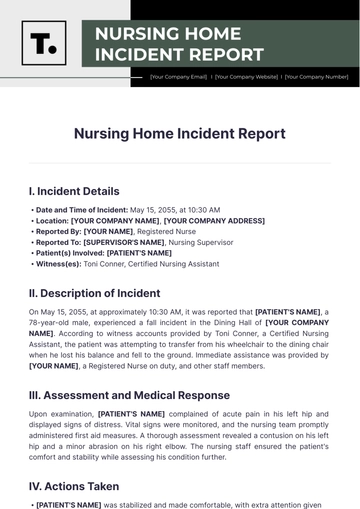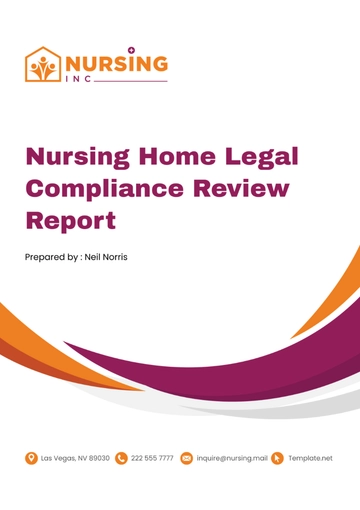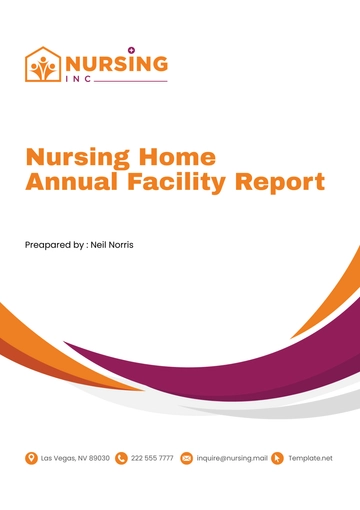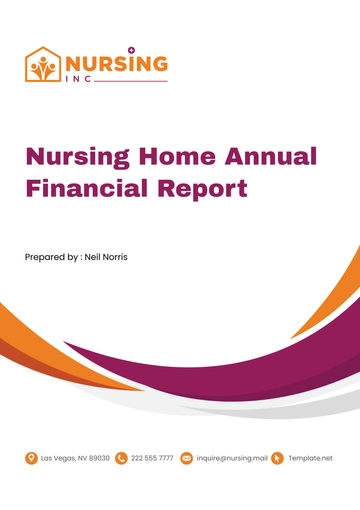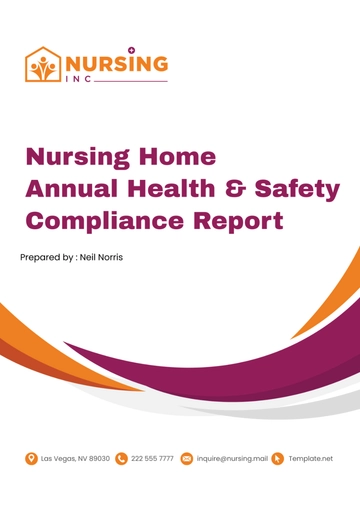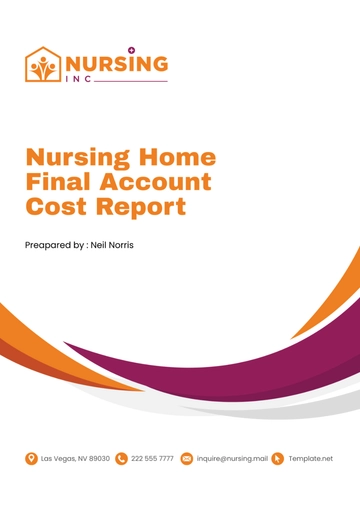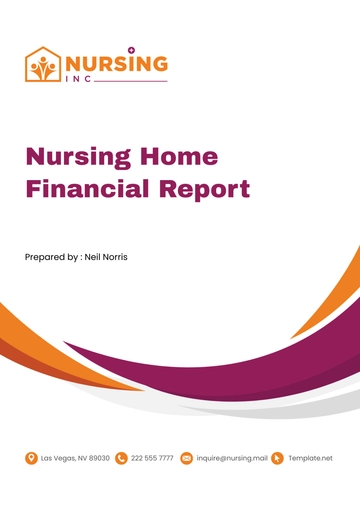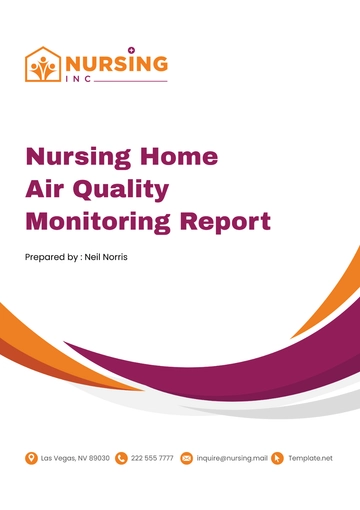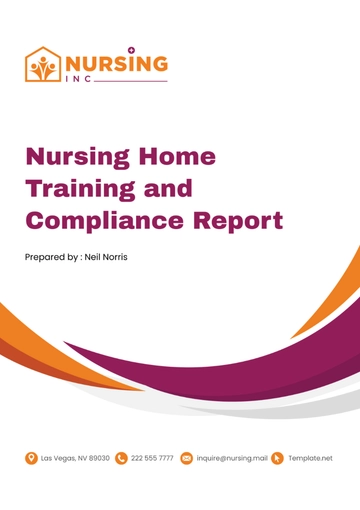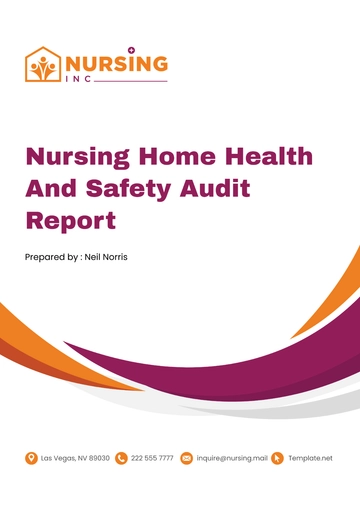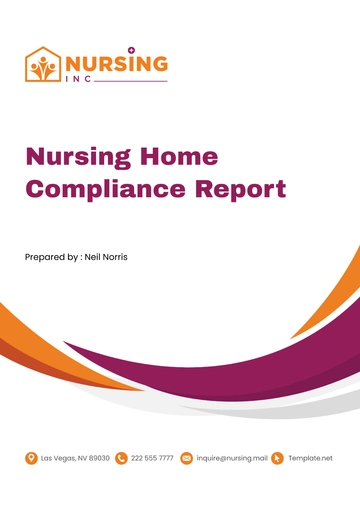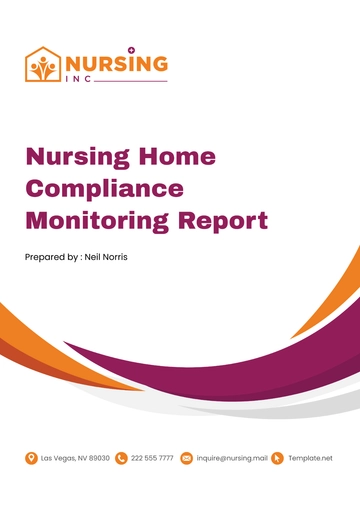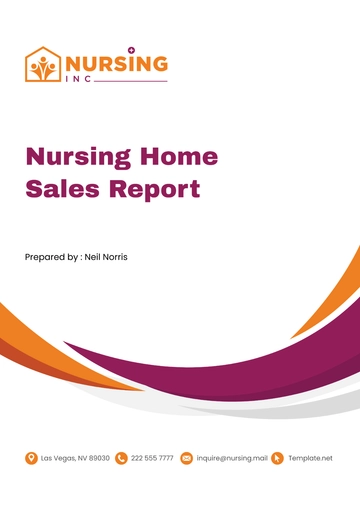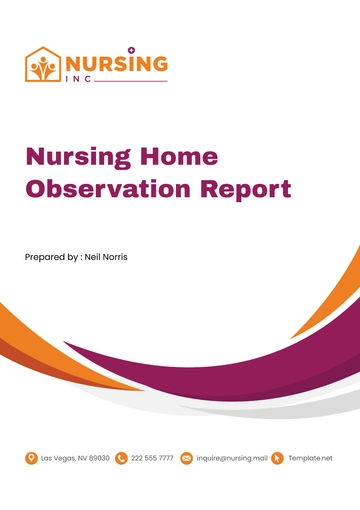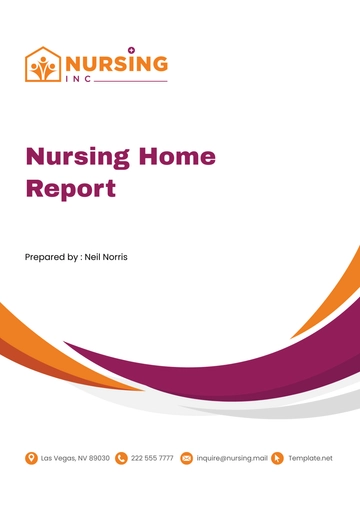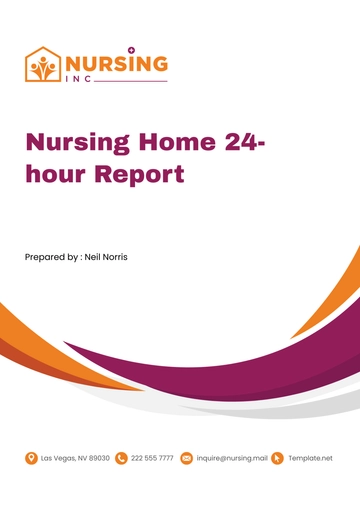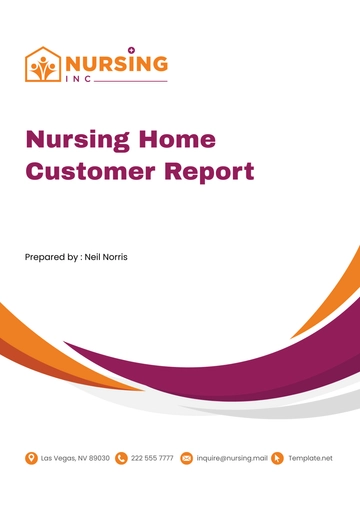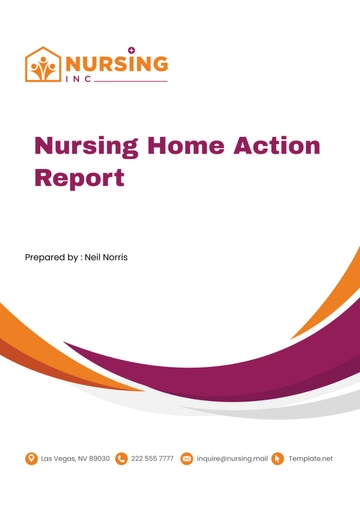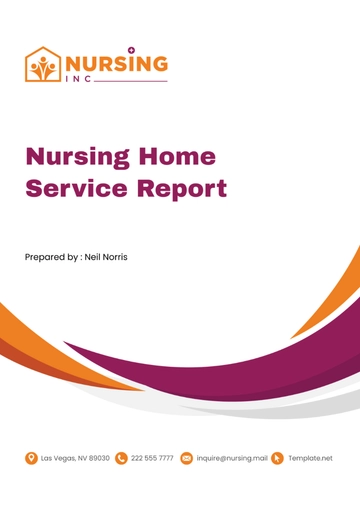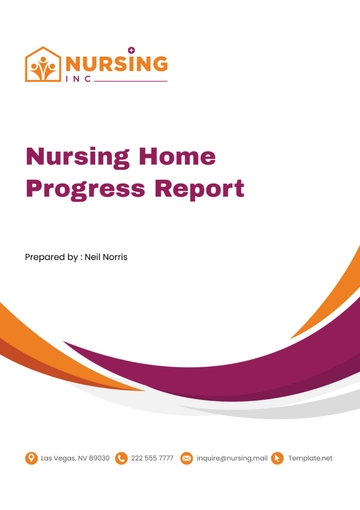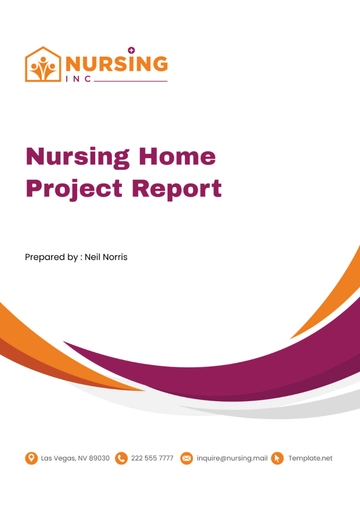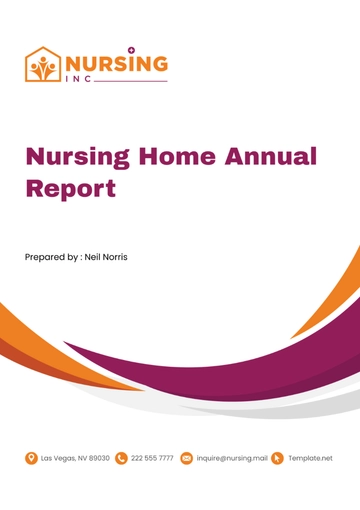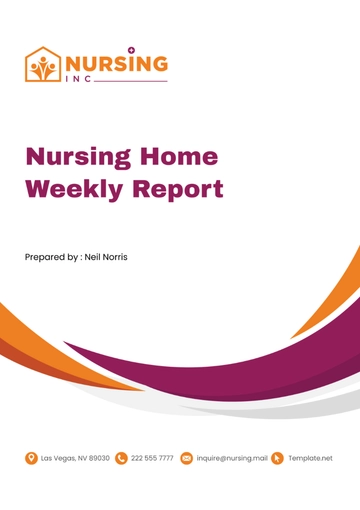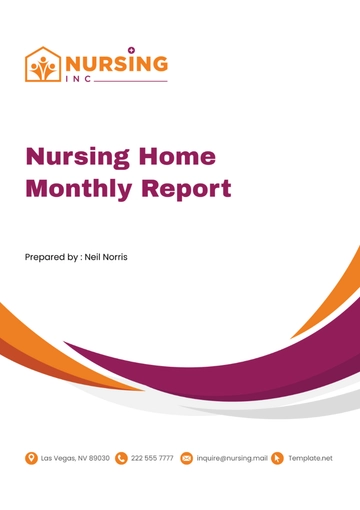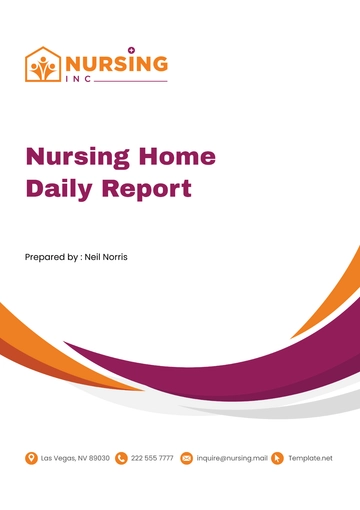Free Nursing Home Progress Report
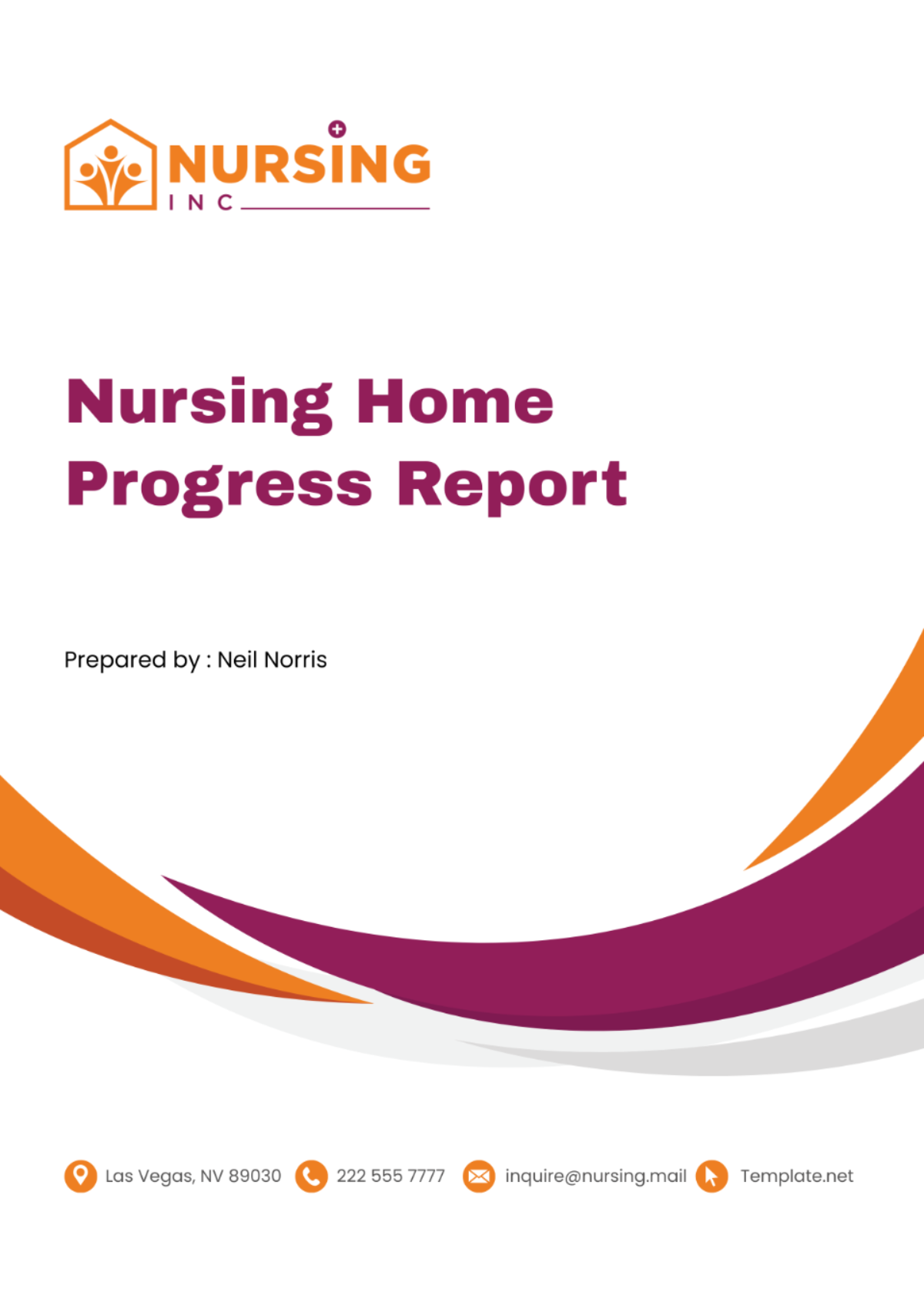
I. Executive Summary
This progress report is intended to provide a comprehensive update on the development of our state-of-the-art nursing home facility, detailing advancements made, challenges encountered, and steps taken to address these challenges since the last reporting period. Our goal is to ensure transparency and keep all stakeholders informed of our progress towards creating a leading-edge care environment for our residents.
Key Findings
Significant progress in construction and renovation activities.
Successful recruitment of key staff positions.
Continued compliance with all regulatory requirements, with no significant issues identified during the period.
Progress Highlights Since Last Report
Completion of 75% of the construction phase.
Implementation of an advanced staff training program.
Establishment of a comprehensive risk management framework to identify and mitigate project risks effectively.
Major Issues Encountered
Delays in the delivery of specialized medical equipment.
Difficulty in recruiting sufficient qualified nursing staff.
Unanticipated budget overruns in construction, necessitating a review and adjustment of the financial plan.
II. Project Overview
Our project aims to establish a nursing home that sets new standards in elderly care, combining innovative healthcare technologies with a compassionate, resident-centered approach. The scope includes the construction of a 120-bed facility equipped with modern medical and recreational amenities, comprehensive staff training programs, and the development of specialized care services tailored to the diverse needs of the elderly population.
Since the last reporting period, we have focused on accelerating construction efforts, enhancing our recruitment strategy to attract high-caliber professionals, and strengthening our operational plans to ensure a smooth transition to opening. The context of our progress is framed by a broader commitment to meeting the growing demand for elderly care services, underscored by challenges such as market competition for skilled staff and the evolving regulatory landscape. Our efforts to navigate these complexities have been guided by a strategic emphasis on quality, sustainability, and innovation.
III. Progress Update
A. Construction and Renovation
We have made significant strides in the construction and renovation of our facility, achieving 75% completion of the planned infrastructure. The construction of the main residential areas, medical facilities, and communal spaces is on schedule, with the exterior structure fully erected and interior finishing currently underway. We've also initiated the landscaping of outdoor spaces to create a welcoming and therapeutic environment for future residents. Despite facing initial delays due to supply chain disruptions, proactive management strategies have kept the project largely on track.
B. Staffing and Training
Our recruitment efforts have successfully filled most of the key managerial and specialized care positions. However, we continue to face challenges in recruiting a full complement of nursing staff, attributed to a competitive job market and a national shortage of qualified professionals. To address this, we've enhanced our recruitment package and partnered with nursing schools for direct recruitment. In parallel, we've launched a comprehensive training program covering clinical excellence, resident safety, and personal development, ensuring our team is prepared to provide unparalleled care from day one.
C. Regulatory Compliance
Throughout the reporting period, we have maintained a strong focus on regulatory compliance, successfully navigating the complexities of healthcare regulations. This includes securing necessary construction permits, adhering to building codes specific to healthcare facilities, and initiating the process for operational licensing. Regular audits have been conducted to ensure compliance with health and safety standards, with no significant issues reported. Our proactive approach to compliance has laid a solid foundation for operational excellence and resident safety.
D. Financial Overview
Our financial management team has kept a tight rein on the budget, ensuring that expenditures remain aligned with our projections, despite some challenges. Below are tables reflecting our budget versus actual expenditures to date, and an initial overview of expected revenue generation.
Item | Budgeted ($) | Actual ($) |
|---|---|---|
Construction | 2,500,000 | 2,750,000 |
Equipment | 600,000 | 620,000 |
Staffing | 500,000 | 450,000 |
Training | 150,000 | 160,000 |
Marketing | 100,000 | 90,000 |
Total | 3,850,000 | 4,070,000 |
Year | Projected Revenue ($) |
|---|---|
1 | 1,200,000 |
2 | 2,400,000 |
3 | 3,600,000 |
The analysis of our financial data indicates that while construction and equipment costs have exceeded initial projections, primarily due to external factors like supply chain disruptions, savings in staffing and more efficient use of marketing funds have helped mitigate these overruns. The projected revenue, based on occupancy rates and service offerings, demonstrates a strong potential for financial sustainability and growth, assuming successful recruitment and operational launch. Our financial strategy moving forward includes adjusting the final construction phase to control costs more tightly and exploring additional revenue streams to enhance financial robustness.
IV. Service Development
A. Services Offered
With the nearing completion of our facility, the implementation of our care services is well underway, with an emphasis on providing a comprehensive suite of health and wellness services. These include specialized medical care, rehabilitation services, and a range of recreational and social activities designed to support the physical, mental, and emotional well-being of our residents. Initial training programs for our staff have focused on these service offerings, ensuring a high standard of care and a deep understanding of our holistic care approach. Resident feedback is being systematically gathered to fine-tune our services and ensure they meet the needs and expectations of our community.
Theme | Percentage |
|---|---|
Satisfaction with Care Quality | 85% |
Requests for More Recreational Activities | 40% |
Appreciation for Staff Responsiveness | 90% |
Desire for More Varied Meal Options | 30% |
Analysis of the feedback indicates a high level of resident satisfaction with the quality of care and staff responsiveness, highlighting the success of our training programs and care models. The feedback also points to areas for improvement, such as expanding recreational activities and diversifying meal options, which we plan to address in our ongoing service development.
B. Resident Admission and Population
Since opening our doors for resident admissions three months ago, we have achieved a 60% occupancy rate, a testament to the demand for high-quality elderly care services in our area. The demographic profile of our residents varies widely, including individuals requiring minimal assistance to those needing comprehensive medical and rehabilitation services. We have also observed a significant interest from families seeking a secure and engaging community for their elderly loved ones. These early admissions have provided valuable insights into the preferences and needs of our residents, guiding further refinements to our service offerings and operational strategies.
V. Quality Improvement Initiatives
In our commitment to continuous improvement, we have identified several key initiatives aimed at enhancing the quality of care and operational efficiency:
Implementation of a Resident Feedback System - To regularly gather and analyze resident feedback, enabling timely adjustments to services and care practices.
Advanced Staff Training Programs - Focused on specialized care areas and resident engagement, ensuring our team remains at the forefront of elderly care best practices.
Technology Integration - To improve care delivery and operational management, including the adoption of electronic health records and telehealth services, enhancing both the efficiency and quality of care.
VI. Risk Management
In our ongoing effort to ensure the safety, well-being, and satisfaction of our residents and staff, we have conducted a thorough risk assessment to identify potential challenges that could impact our operations. This proactive approach allows us to implement effective strategies to mitigate these risks, ensuring the continued success and improvement of our facility.
Risk | Likelihood | Impact |
|---|---|---|
Staffing Shortages | High | Significant |
Supply Chain Disruptions | Medium | Moderate |
Technological Failures | Low | High |
Regulatory Compliance Issues | Low | Significant |
Resident Safety Incidents | Medium | Significant |
Following the identification of these key risks, we have developed and are implementing a comprehensive set of mitigation strategies. These include:
Staffing Shortages: Enhancing our recruitment strategies through competitive compensation packages and partnerships with educational institutions. Implementing staff retention programs focusing on professional development and job satisfaction.
Supply Chain Disruptions: Establishing relationships with multiple suppliers and maintaining a strategic reserve of critical supplies to cushion against supply chain disruptions.
Technological Failures: Investing in high-quality, redundant systems and regular training for staff on technology use. Implementing regular system checks and maintenance routines.
Regulatory Compliance Issues: Engaging legal and compliance experts to ensure ongoing education and adherence to evolving regulations. Regular internal audits and corrective action plans are in place.
Resident Safety Incidents: Developing rigorous safety protocols and emergency response plans, alongside continuous staff training in safety practices. Implementing a resident feedback loop to promptly address safety concerns.
VII. Conclusion
As we move forward, it is imperative for all stakeholders to remain engaged and committed to the continuous improvement and success of our facility. The recommendations provided in this report, derived from our progress updates, service development insights, and risk management strategies, underscore the importance of adaptability, proactive planning, and resident-centered care. We recommend stakeholders to:
Support the ongoing development and refinement of our services.
Advocate for and contribute to our quality improvement initiatives.
Participate in the collaborative effort to mitigate identified risks.
- 100% Customizable, free editor
- Access 1 Million+ Templates, photo’s & graphics
- Download or share as a template
- Click and replace photos, graphics, text, backgrounds
- Resize, crop, AI write & more
- Access advanced editor
Maximize the impact of your operational updates with the Nursing Home Progress Report Template from Template.net. Tailored to capture significant milestones and challenges, this template is entirely editable and customizable, ensuring your reports accurately reflect your nursing home's journey. Streamline your progress reporting process, editable in our AI Editor tool, for a detailed and professional overview every time.
You may also like
- Sales Report
- Daily Report
- Project Report
- Business Report
- Weekly Report
- Incident Report
- Annual Report
- Report Layout
- Report Design
- Progress Report
- Marketing Report
- Company Report
- Monthly Report
- Audit Report
- Status Report
- School Report
- Reports Hr
- Management Report
- Project Status Report
- Handover Report
- Health And Safety Report
- Restaurant Report
- Construction Report
- Research Report
- Evaluation Report
- Investigation Report
- Employee Report
- Advertising Report
- Weekly Status Report
- Project Management Report
- Finance Report
- Service Report
- Technical Report
- Meeting Report
- Quarterly Report
- Inspection Report
- Medical Report
- Test Report
- Summary Report
- Inventory Report
- Valuation Report
- Operations Report
- Payroll Report
- Training Report
- Job Report
- Case Report
- Performance Report
- Board Report
- Internal Audit Report
- Student Report
- Monthly Management Report
- Small Business Report
- Accident Report
- Call Center Report
- Activity Report
- IT and Software Report
- Internship Report
- Visit Report
- Product Report
- Book Report
- Property Report
- Recruitment Report
- University Report
- Event Report
- SEO Report
- Conference Report
- Narrative Report
- Nursing Home Report
- Preschool Report
- Call Report
- Customer Report
- Employee Incident Report
- Accomplishment Report
- Social Media Report
- Work From Home Report
- Security Report
- Damage Report
- Quality Report
- Internal Report
- Nurse Report
- Real Estate Report
- Hotel Report
- Equipment Report
- Credit Report
- Field Report
- Non Profit Report
- Maintenance Report
- News Report
- Survey Report
- Executive Report
- Law Firm Report
- Advertising Agency Report
- Interior Design Report
- Travel Agency Report
- Stock Report
- Salon Report
- Bug Report
- Workplace Report
- Action Report
- Investor Report
- Cleaning Services Report
- Consulting Report
- Freelancer Report
- Site Visit Report
- Trip Report
- Classroom Observation Report
- Vehicle Report
- Final Report
- Software Report
